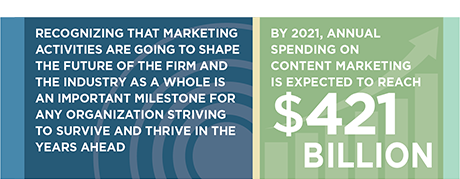
Although the asset management industry is often criticized as being slow to move and evolve, the years since the 2008 financial crisis have been ripe with change. Faced with new regulations and challenges related to business management—plus heightened competition and fee compression—the industry has shifted into a more mature state, where brand and marketing now play a bigger role in distinguishing the winners from the losers.
One of the leading indicators of the industry’s broader evolution has been an increased focus on strategic marketing. Some firms have shifted their mindset about the meaning of marketing from tactical activities to more strategic plans. In other firms, the evolution has been about dedicating resources to the function by increasing staff or budget dollars or, perhaps, allocating dedicated resources against marketing efforts for the first time. Either way, recognizing that marketing activities—a complementary blend of tactical and strategic undertakings—are going to shape the future of the firm and the industry as a whole is an important milestone for any organization striving to survive and thrive in the years ahead.
While the list may vary from firm to firm, Greenwich Associates considers the following to be key elements of a strategic marketing function:
- Development and curation of the brand
- Client tiering, targeting and segmentation practices
- Thought leadership strategy
- Technology solutions and social media strategies
- Client journey mapping and client experience
- Embracing data to shed light on:
-Information consumption patterns and preferences
-Utilization of “big data” and artificial intelligence
-Marketing ROI and measures of succe

